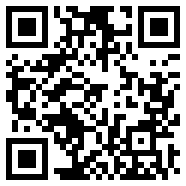Just a little post on an awesome app I found on the twitter.
The application is called Pi cubed, and it's basically a calculator on iPhone that utilizes the touch interface. The description I'm giving here sounds depressingly simple, but you need to see this application in person in order to understand how cool it is, and how relatively mundane act of calculation can be made fun and interactive simply through some interface change.
Here is a video of the application in action via http://theapppodcast.com site.
As you can see, this isn't the kind of calculator designed to help you out with your pocket change. The support for formatting the equations of increasingly complex form to pdf or text output through email means that the application is aimed at students and possibly professional who might have some great ideas for equations on the go (though in that case the absence of LaTeX formatting is a little jarring). This application is obviously aiming to be a type of mobile Mathematica.
I'm a huge supporter of scientific apps on mobile platforms. I think the market for scientific applications on the increasingly sophisticated mobile handsets is a huge opportunity and is one of the things that might actually help in changing the world for the better by bringing the lab out of the universities and corporations. So the whole Mathematica-mobile aspect of this application, and inevitable coming of even more sophisticated mathematics/sciences packages for mobile platforms is exciting to me.
I just have one problem with this though. Why iPhone? iPhone isn't open. If you want to develop for an iPhone you need to clunk down for a computer capable of running OS X natively, and you use Apple proprietary toolset that no one else in the industry uses. The draconian app approval process and anti-competitive behavior at Apple had been making the headlines in tech communities lately. I guess this is just a market issue, but I find myself keep hoping for a decent Android based replacement for iPhones that developers can distribute their work for.
Subscribe to:
Post Comments (Atom)

I'm the developer of Pi Cubed, and I appreciate your kind words.
ReplyDeleteAs far as the platform goes, my decision to write this application for the iPhone was done purely from a development technology perspective. It simply would not be practical to write this application for any other platform. The visual layout is enabled by Core Animation, multitouch events let you zoom in and out, and a whole mess of supporting frameworks make it possible for a lone developer like me to assemble this in the time that I did. These elements are lacking on Android, WebOS, and other mobile operating systems. Additionally, the code I've written runs on both Mac and iPhone, so I'll be able to do a desktop counterpart to this with minimal effort.
The market size for iPhone applications is a secondary concern for me, and in some ways even makes it more difficult to sell an application like this. It's hard to stand out on the platform now.
I migrated to the Mac from Linux primarily because of the Cocoa development environment. The limitations as far as platforms that my code can run on are well worth it, given how much more I can do in a given period of time. At work, we migrated our control software from C++ on Linux to Cocoa on the Mac, and were able to do more in three months after that than in the entire previous year.
I've also gained from the focus on user experience present throughout the Mac and iPhone development community. Quite frankly, a lot of the Linux-based software I've used over the years had crappy interfaces that made the applications a pain to use. I see some of that lack of polish present on even the best Android applications and even in implementations of the OS, and it saddens me.
However, Android as a platform is young, and I expect it will improve quite a bit over the next few years. At some point, they might have a development environment as good as the one for the iPhone, but until then I'll focus my efforts on the iPhone and Mac.
Oh wow. Thanks for visiting my blog. Let me just say that your application is probably the first app on the entire iPhone platform that made it possible to touch the mathematics, and I just really love the idea.
ReplyDeleteI fully understand that the Android platform isn't really mature and the iPhone platform certainly has the best interface in the market, both for the developers and end users. I was more or less venting on that last bit since I really want to see an opensource alternative that's as great as iPhones to develop for. And considering that the iPhone apps are built with objective C with development tools more or less included with OS X, I guess it's more open than some other major mobile devices out there.
There are a lot of science people out there looking at iPhone/iPod touch as a genuine tools in laboratories (the Papers app, and the synthetic biology CAD app for example). They are just waiting for the right app to come along, and this will probably prove to be a lucrative niche market to a lot of developers willing to invest some time and effort into it. I wish you best of luck in your future projects.